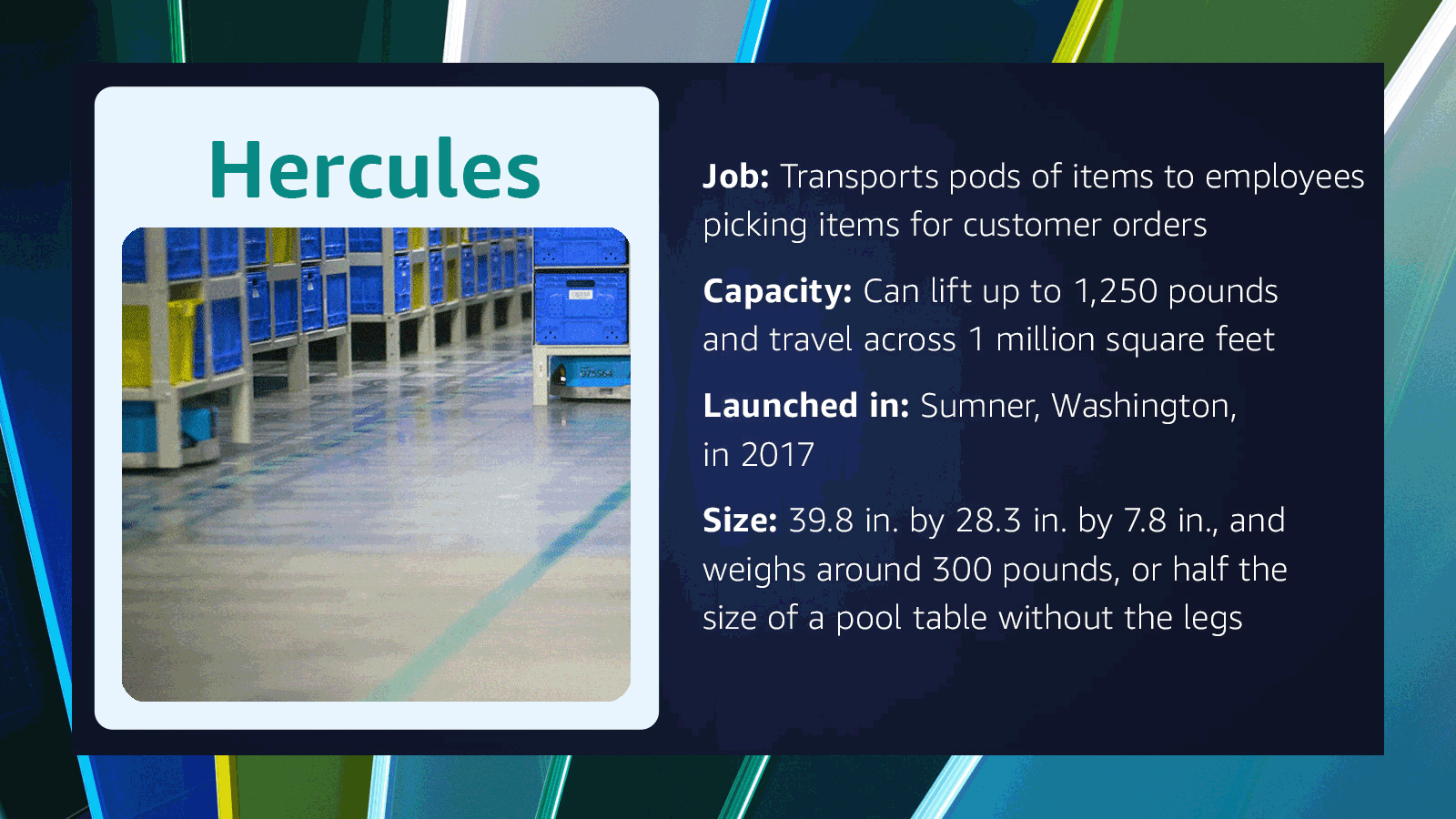
Amazon’s latest robotics innovations are powering state-of-the-art fulfillment centers, such as newest in Shreveport, Louisiana.
Amazon’s foray into robotics began more than a decade ago when the company acquired Massachusetts-based Kiva Systems in 2012. Since then, Amazon has developed, produced, and deployed more than 750,000 robots across its operations network.
The goal of robotics technology within Amazon’s operations is simple: pair employees with the right technology to make their workday safer, easier, and more productive, while delivering packages to customers faster than ever.
“Years of innovation has allowed us to build, test, and scale this unique, highly integrated suite of robotics systems that work to support employees fulfilling customer orders,” said Scott Dresser, vice president of Amazon Robotics. “Thanks to advancements in AI, these technologies integrate seamlessly, and will help us drive an estimated 25% productivity improvement at next-generation fulfillment facilities. This allows us to deliver more efficiently for customers, while supporting the employees who make it happen.”
Follow along the journey of the package through the eyes of the eight robots that are supporting the next generation of package fulfillment at Amazon.
1. Sequoia

Before orders are fulfilled, Amazon’s sophisticated inventory planning system ensures the right products are in fulfillment centers near customers. Then, Amazon’s robotic system, Sequoia, uses AI, robotics, and computer vision systems to consolidate inventory and free up storage at the site to facilitate faster order transactions closer to our customers.

Sequoia enables Amazon to identify and store inventory up to 75% faster at our fulfillment centers. It works by having mobile robots transport inventory directly to a containerized storage system or to an employee picking out items for a customer order.
Inventory is transported directly to employees at a workstation ergonomically situated for their power zone (between mid-thigh and mid-chest height), mitigating the need for employees to reach above their heads or squat down that can lead to common workplace injuries.
2. Hercules

Next up, employees will use a variety of robotics systems to pick items for customer orders. Hercules is a drive unit that finds and brings pods of items from areas of the fulfillment center to employees who pick out items for customer orders before they are packaged.
Hercules makes key decisions about how it moves independently but takes overall direction from centralized planning software. It then uses a forward-facing 3D camera to differentiate between people, pods, other robots, and other objects in its path to make safer decisions.

Hercules uses its camera to read a grid of encoded markers on the floor, which enables it to navigate, find its position, and locate any pod.
3. Titan

Similar to Hercules, Titan is another drive unit that brings items from across Amazon’s fulfillment centers directly to employees as they assemble customer orders. What’s special about Titan is that it can lift twice as much as Hercules, meaning it focuses on larger and/or bulkier items like small household appliances or pallets of food.

Titan picks up pods of totes and navigates through a restricted robotics floor using computer vision.
4. Sparrow

Sparrow is another robotic system that supports employees who aggregate items for customer orders. This robotic arm picks up and moves individual items from containers into specific totes to send off to employees before they’re packaged.

Sparrow uses computer vision and AI to identify the correct item and add it to the tote on its delivery journey.
5. Packaging Automation

Once all the items for a customer order are selected, Amazon uses a variety of packaging innovation systems to pack up customer orders with sustainability in mind.
This machine originally created plastic bags, but has been retrofitted to create made-to-fit paper bags. It uses sensors to measure an order’s dimensions and then creates a correctly sized, protective bag using a more durable, weather-resistant paper and heat-sealing technology.

This technology allows us to use curbside recyclable materials so more customers can recycle at home. We have retrofitted more than 120 of these machines across the U.S. in more than 20 fulfillment centers, helping us avoid more than 130 million plastic bags this year.
6. Robin

Once a package is boxed up, it starts to make its way to the outbound dock for the next leg of its journey to a customer’s doorstep. Robin was the first robotic arm ever deployed by Amazon Robotics, made to sort packages before they’re brought to the outbound dock to be placed on a truck.

Robin grabs packages from conveyor belts and puts them onto robotic drive units to be moved to the next part of the facility. It also transfers damaged packages to ensure optimal quality control.
7. Cardinal

Similar to Robin, Cardinal is a robotic arm that uses advanced AI and computer vision to quickly select one package out of a pile of packages delivered via a chute, lift it with air suction, read the label, and precisely place it into the appropriate cart before it’s brought to a truck in the loading dock.

Cardinal can handle packages up to 50 pounds, which helps reduce the risk of injury for employees who would normally have to pick up larger packages.
8. Proteus

Proteus is Amazon’s first fully autonomous mobile robot, meaning it can navigate freely throughout a site using sensors to detect and avoid objects in front of it. Other mobile robots, such as Titan and Hercules, are confined to areas where only authorized robotic specialists can enter, and read barcodes that are stickered to the floor as navigation coordinates.

Proteus works in conjunction with Cardinal—a robotic arm that loads packages into carts—to move those carts from the outbound dock area of the fulfillment center to the loading dock, where packages are loaded onto trucks.



